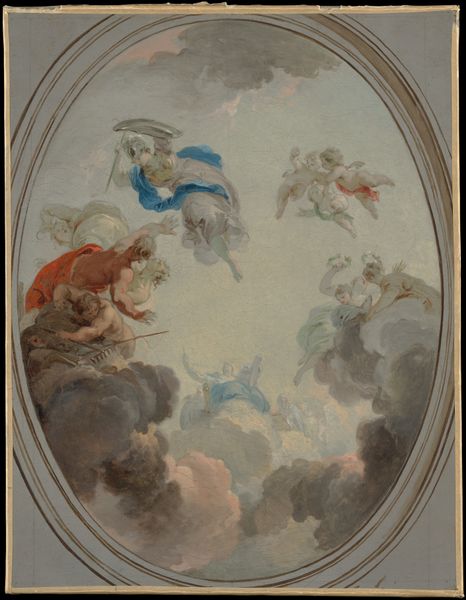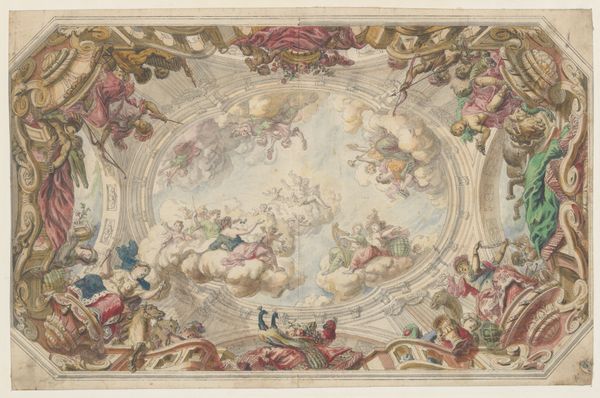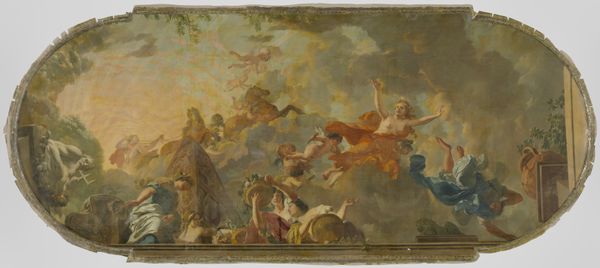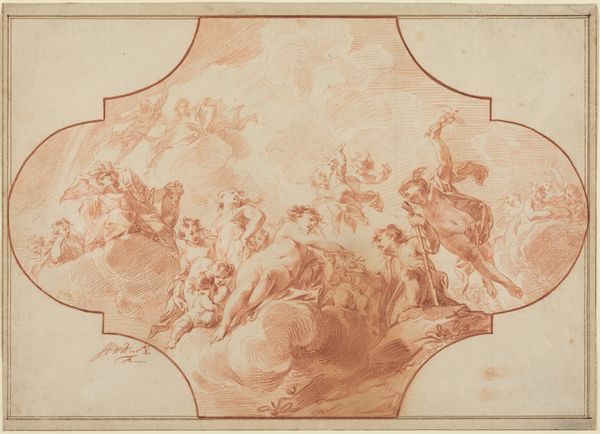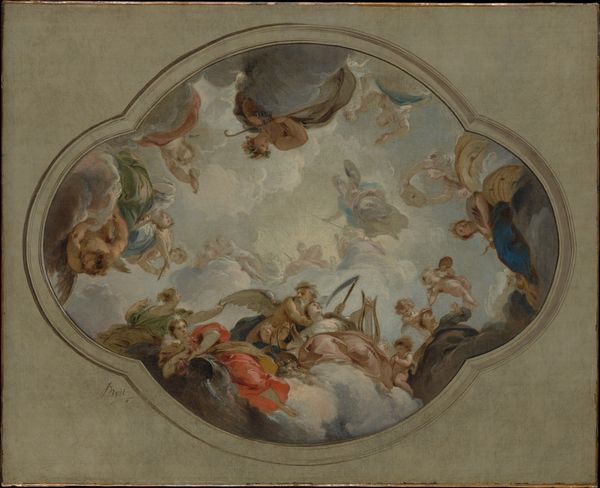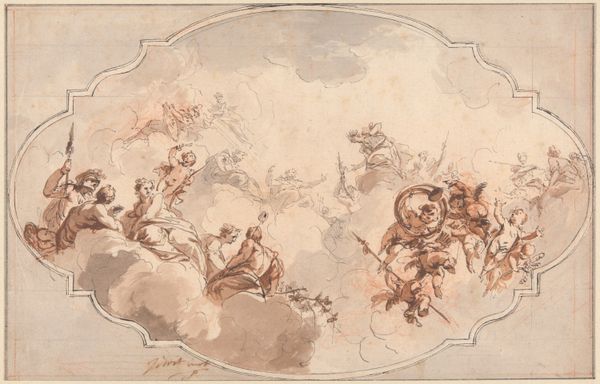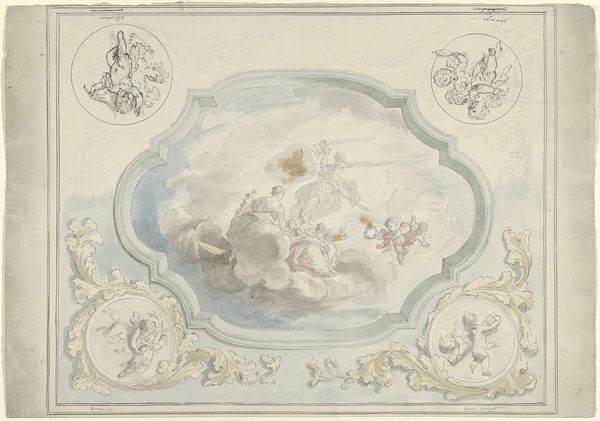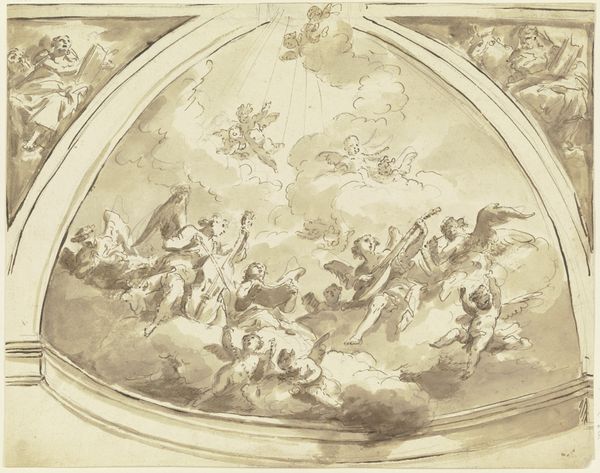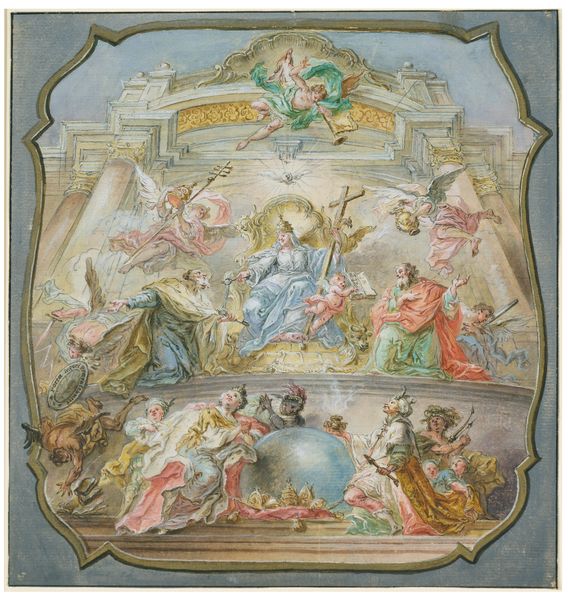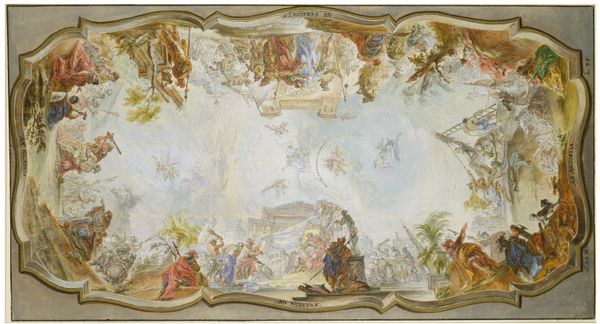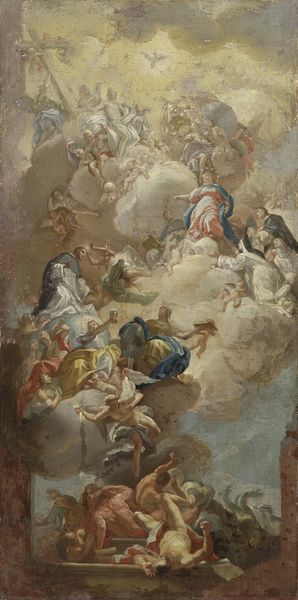
painting, fresco, watercolor
#
water colours
#
allegory
#
painting
#
landscape
#
figuration
#
fresco
#
oil painting
#
watercolor
#
rococo
Dimensions: 20 7/8 x 24 7/8 in. (53 x 63.2 cm)
Copyright: Public Domain
Curator: What a light and airy scene! The figures seem to float effortlessly amidst the clouds. Editor: That's Jacob de Wit's "Flora and Zephyr," painted in 1743. De Wit was known for these kinds of allegorical scenes, often designed for ceiling decorations. Curator: An allegory... so the figures are meant to represent something beyond themselves? Editor: Precisely. Flora, of course, is the Roman goddess of flowers and spring, often associated with fertility and new beginnings. Zephyr is the god of the west wind, a gentle, life-giving breeze. Curator: The west wind as a symbol, then, of renewal, gently ushering in change, rather than the destructive power of the east or north. Editor: It all feels carefully constructed. De Wit uses light, pastel colors that evoke a sense of gentle warmth. The cupids bearing wreaths reinforces this atmosphere of celebratory growth and delicate power. It reminds us of rococo love for natural allegories used to explore life lessons or philosophies. Curator: Looking at this now, knowing it was designed for a ceiling, it's hard not to consider its original context and consider how the composition and meaning shift with the audience gaze directed upward. Editor: Right. Ceiling paintings often were used to convey a message about the patron and their values. The choice of Flora and Zephyr might imply a family’s aspiration for harmony, prosperity, and growth. It links them symbolically to these enduring classical themes. Curator: We must also think of the ways the scene has shifted in its reading from 1743 to now; the associations and power structures inevitably alter through a contemporary understanding. Does that elevate its visual impact, or does it muddy its original meaning? Editor: These interpretations are fluid. That’s the power of allegory and visual symbolism. This work encourages us to reflect on cycles of renewal and on those classical concepts and their significance across time.
Comments
No comments
Be the first to comment and join the conversation on the ultimate creative platform.
